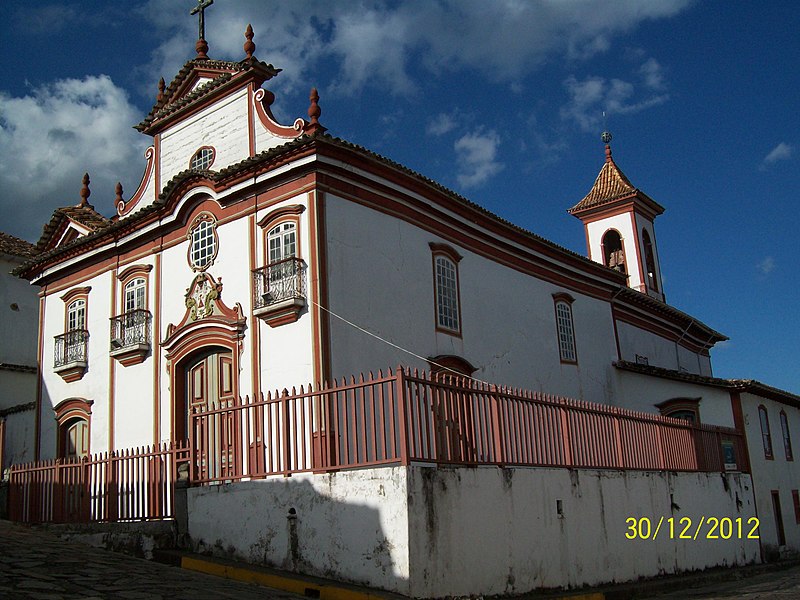This article features the stamp of the Our Lady of Carmo Church Pipe Organ from Diamantina, Brazil. While instruments are popular topics on stamps, specific instruments are rare. It is common to see a violin, a piano, or a guitar, on a stamp. However, these are usually generic instruments. With organ stamps, however, the stamp usually depicts a very specific instrument. This is the case with the organ on a Brazilian stamp from 1959.
Organs appear on a large number of stamps. I think it is because they are expensive to build and usually are the pride of not only a congregation, but often of a city or even a country. You can read about organ stamps from Mexico, Austria, France, and elsewhere, all on this blog.
The Stamp
The Brazilian stamp is in a single color, a magenta on white paper and bears the denomination of 3.30 Brazilian Cruzeiro. It features two visual elements, the organ and a crest, which is the order of the Carmelite order. In addition, at the top of the stamp are the dates 1759-1959. Then, at the bottom are the Portuguese words ” “Bi-centenario / Da Ordem Do Carmo.” This indicates that the stamp is in celebration of the bicentennial of the Our Lady of Carmo Church in the Diamantina municipality, Brazil. The construction of the church began in 1759/60 and was completed in 1765. The church is now a UNESCO world heritage site and the organ one of the few surviving eighteenth-century organs in all of Brazil.

Diamantina, Brazil, 1959
Scott Number BR 893
The Church
The exterior of the church is in a dark wood and adobe, following typical construction techniques of the region. It is the only church of its kind that has a single bell tower at the rear of the church. The funding for the construction of the church came from Fernandes de Oliveira. The placement of the bell tower was said to be as far away from the window of his mistress as possible, so as not to wake her when the bell rang.

Inside, the church is resplendent. The main chapel ceiling of 1766 features paintings showing the Virgin Mary deliving scapulars to Saint Simão Stock. Above the nave, the ceiling shows the Prophet Elijah’s rapture to heaven in a chariot of fire. The artist José Soares de Araújo painted the ceiling between 1778 and 1784. The altarpieces are in the style of D. João V.
The Organ
The organ was built by the priest Manoel de Almeida Silva and was made between 1782 and 1787. It is also likely that the eminent Brazilian composer José Joaquim Emerico Lobo de Mesquita was a part of designing the instrument. At the time, he was the organist at the cathedral of Santo Antônio also in Diamantina.
Beginning in 2008, the instrument underwent a major restoration, led by the master organ builder Frédéric Desmottes. According to researcher, approximately 90% of the original material of the organ survived. The project saw the restoration of the instrument and the case with the goal to protect as much of the original as possible. If you can read Portuguese, the entire project, analyzing the instrument and through the renovation was covered in a dissertation by Handel Cecilio and accessible here.
Wonderfully, the instrument is now playable. Watch the following video to hear it and to see some of the wonderful interior of the church.



